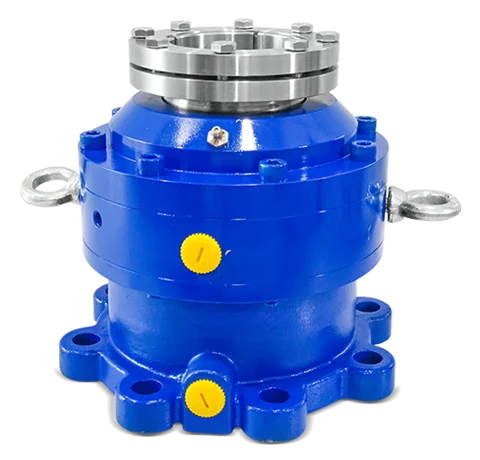Posted At: Feb 19, 2025 - 988 Views

Mechanical Seals: What They Are, How They Work & Why They Matter
What Are Mechanical Seals?
Mechanical seals are critical components used in pumps, compressors, and other rotating equipment to prevent fluid leakage. They form a secure barrier between a rotating shaft and a stationary housing, ensuring that liquids or gases stay contained while allowing smooth rotation.
Unlike traditional packing seals, which rely on compression and require frequent maintenance, mechanical seals provide long-lasting, precise, and efficient sealing — improving equipment performance and reducing downtime.
How Do Mechanical Seals Work?
The working principle of mechanical seals is simple yet highly effective. The seal consists of two main parts — one rotating with the shaft and the other stationary with the housing.
When the equipment operates:
The rotating seal face turns with the shaft, while the stationary face remains fixed.
A thin lubricating film forms between both faces, reducing friction and preventing wear.
This controlled lubrication allows the seal to stay cool and maintain contact without excessive friction.
The spring mechanism keeps consistent pressure between faces, even when the shaft moves or vibrates.
This design ensures minimal leakage, better reliability, and extended service life — even in demanding industrial environments.
Main Components of a Mechanical Seal
A typical mechanical seal assembly includes the following essential elements:
Rotating Face – Attached to the shaft and rotates during operation.
Stationary Face – Fixed to the housing; forms the sealing interface with the rotating face.
Secondary Seals – O-rings or gaskets that prevent bypass leakage.
Spring or Bellows – Maintains face contact and compensates for wear or misalignment.
Gland Plate – Secures the stationary face and positions the seal within the equipment.
Drive Mechanism – Transfers motion from the shaft to the rotating seal face.
Each component works together to deliver a stable and leak-free performance in both low and high-pressure conditions.
Types of Mechanical Seals
There are various types of mechanical seals, each designed for specific applications and operating environments:
1. Balanced and Unbalanced Seals
Balanced Seals: Handle higher pressures and reduce heat generation.
Unbalanced Seals: Used in low-pressure systems and cost-sensitive applications.
2. Single and Double Mechanical Seals
Single Seals: One set of sealing faces; suitable for clean, non-hazardous fluids.
Double Seals: Two sets of sealing faces; ideal for toxic, abrasive, or high-pressure fluids.
3. Cartridge Seals
Pre-assembled units that are easy to install and reduce installation errors. Commonly used in modern industrial pumps for reliability and convenience.
4. Pusher and Non-Pusher Seals
Pusher Seals: Use springs to maintain face contact; allow axial movement for wear compensation.
Non-Pusher Seals: Use bellows instead of springs; suitable for high-temperature and corrosive conditions.
5. Dry-Running and Wet-Running Seals
Dry-Running Seals: Operate without lubrication; used where contamination must be avoided.
Wet-Running Seals: Use a liquid film for cooling and lubrication during operation.
Applications of Mechanical Seals
Mechanical seals are used across multiple industries where leak prevention and efficiency are essential:
Pumps: Centrifugal, rotary, and reciprocating pumps in industrial plants.
Compressors: Ensure airtight operation in gas and refrigeration systems.
Mixers and Agitators: Used in chemical, food, and pharmaceutical industries.
Oil & Gas: Provide reliable sealing in refineries and pipelines.
Marine Applications: Support propulsion systems and seawater pumps.
Water Treatment: Used in wastewater and desalination systems.
Advantages of Mechanical Seals
Switching from traditional gland packing to mechanical seals offers several benefits:
✅ Leak Prevention: Maintains clean, safe, and leak-free operations.
✅ Energy Efficiency: Reduced friction leads to lower power consumption.
✅ Extended Equipment Life: Minimizes wear and tear on rotating components.
✅ Lower Maintenance Costs: Longer intervals between replacements.
✅ Operational Reliability: Performs consistently in high-pressure and harsh conditions.
Best Practices for Mechanical Seal Maintenance
To extend the lifespan of your mechanical seals, follow these maintenance tips:
Inspect seals regularly for wear or leakage.
Ensure proper installation as per manufacturer guidelines.
Use clean lubricants and compatible fluids.
Monitor system pressure, temperature, and vibration levels.
Replace worn parts before major damage occurs.
Why Mechanical Seals Are Essential in Industry
From power generation to chemical processing, mechanical seals are key to maintaining system efficiency, preventing environmental leakage, and ensuring compliance with safety standards.
They protect both equipment and operators — making them indispensable in modern fluid-handling systems.
Conclusion
Mechanical seals are vital for keeping rotating equipment leak-free, efficient, and reliable. Understanding their types, working principles, and benefits helps industries choose the right seal for every application.
At QMSeals, we specialize in high-performance mechanical seals designed for durability and precision. Our solutions are trusted across chemical, oil & gas, marine, and water treatment industries.
👉 Explore our complete range of mechanical seals at QMSeals.com and experience reliable sealing performance for every industrial need.
Frequently Asked Questions
1. What is the main purpose of a mechanical seal?
To prevent fluid leakage between a rotating shaft and stationary housing in pumps and compressors.
2. What are the common types of mechanical seals?
Balanced, unbalanced, single, double, cartridge, pusher, and non-pusher seals.
3. How long does a mechanical seal last?
Typically between 1–5 years, depending on usage, conditions, and maintenance.
4. What materials are used in mechanical seals?
Carbon, ceramic, silicon carbide, tungsten carbide, and elastomers like Viton or Nitrile.
5. How do I choose the right mechanical seal?
Consider operating pressure, temperature, fluid type, and environmental conditions before selection.


